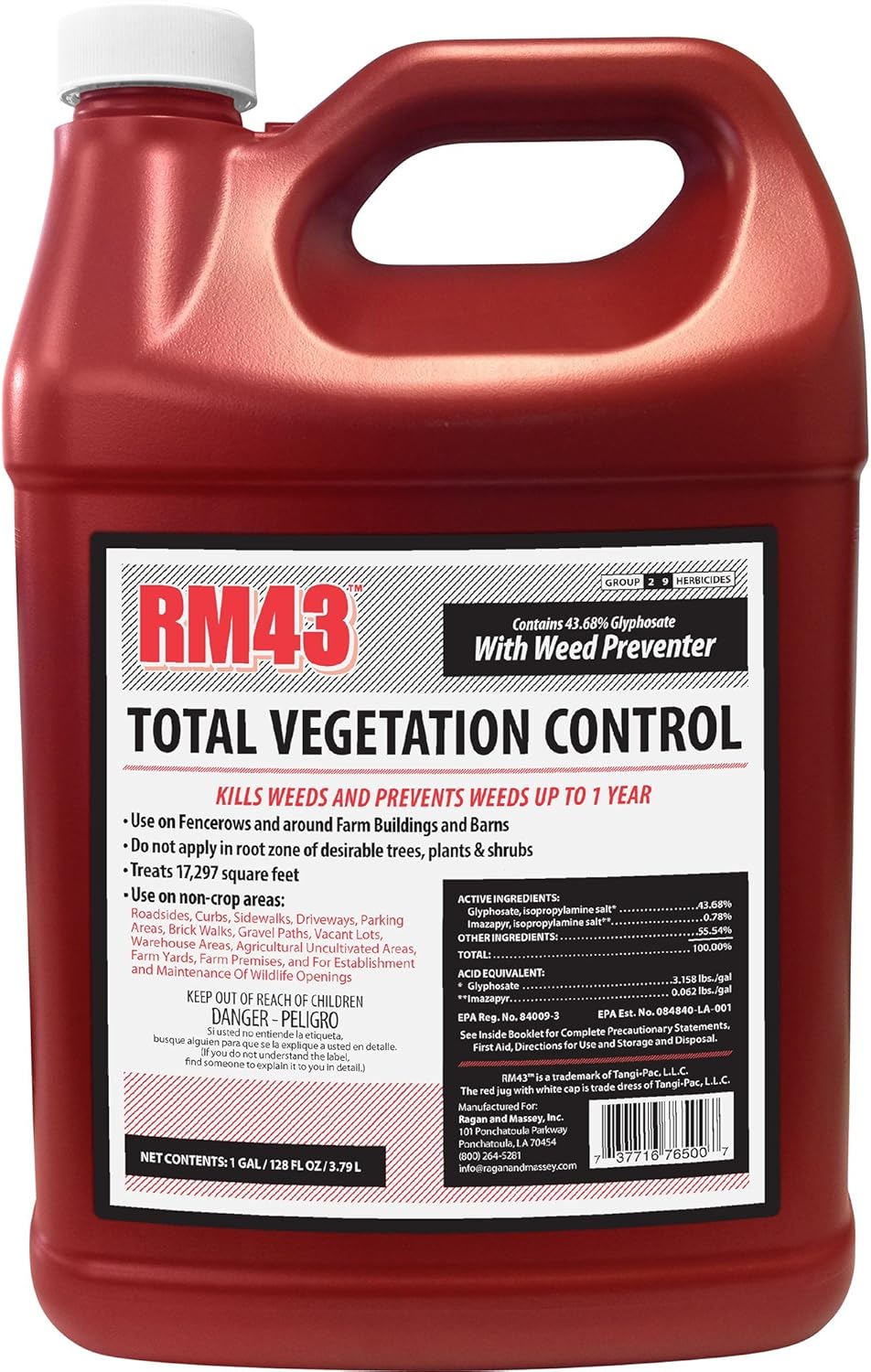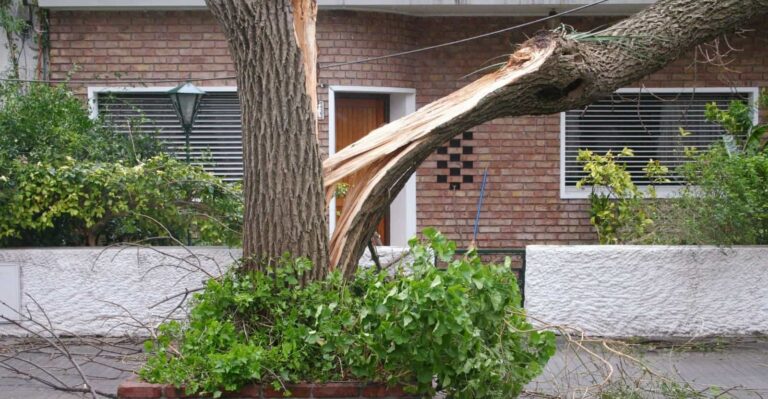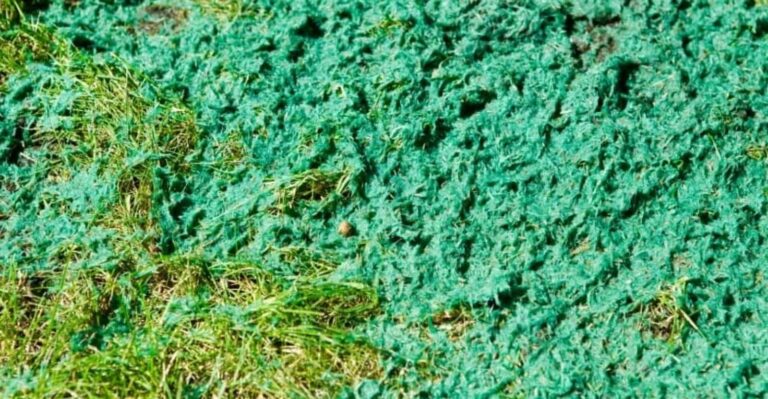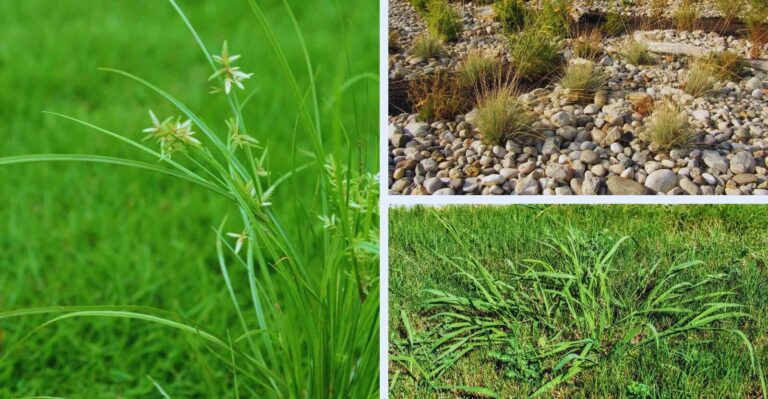Amazon has put together some great Home Gift Deals – save money and get your shopping done at the comfort of your home! Click here to see deals on Amazon
When you’ve got a flower garden, weed is a common problem to deal with. They inevitably show up to crowd out your fresh blooms, but you don’t have to let them stay.
Weedkiller is an effective solution that you need for clearing your flower bed of unwanted plants. They’re sold in various forms, including spray, powder, and granules to sprinkle on the ground.
You should choose the options that work best for your particular situation. So whether you’re looking for an organic weed killer for your garden or just want to find out which is the best weed killer for flower beds, the information below can help you make a good choice.
What kinds of weeds take over flower beds, and what to do about them?
Several different types of weed can take over your garden. However, many of them look similar to the flowers you want in your garden. Often, it’s just a matter of knowing what to look for to tell the difference between them.
Here are some of the most invasive types of weeds found that could destroy the entire plant.

Crabgrass
Crabgrass is an annual weed that often causes lots of frustration to a gardener. It can produce over 160,000 seeds in each season, ready to germinate when the conditions become favorable.
In late spring or early summer, when the day gets warmer and longer, crabgrass sprouts and spread as soon as the soil warms up. It not only overcrowd the flower bed but also spreads quickly and outcompetes legitimate grass plants.
The best way to control crabgrass is using a pre-emergent herbicide. But if you can’t wait till next spring, use selective crabgrass herbicide to kill it.
Read More: 11 Best Crabgrass Killer in 2021: Buying Guide and Reviews
Dandelion
Dandelions are a common sight on front lawns and other grassy areas, including flower beds. These broadleaf weeds bloom yellow flowers and spread through seed.
The seeds are contained in a bright white “puffball” that the wind can carry. In a favorable condition, they germinate quickly and grow into mature plants in as few as ten days.
Purslane
Purslane is an invasive annual weed that grows in cracks of sidewalks, steps, driveways, and around flower beds. It has a fleshy red stem that grows a yellow star-shaped flower.
Some people use leaves and stems of purslane in herbal teas to treat sore throats and coughs. You can easily control it if you take immediate steps when you notice it growing in the garden. Applying herbicides on it’s the best way to control the growth.
Bermuda grass
Bermuda grass is a warm-season weed that thrives during the spring and summer. It has a similar look to crabgrass but is more invasive than it. The flowers of bermudagrass can vary in color, but they’re usually yellow or gold.
The grass has a very coarse texture with fine hairs on it. It’s grown as green grass in the yard, but often their seeds spread over the flower bed where they take over other plant seeds. You can apply herbicide to it to control the growth.
Oxalis
Oxalis is a particularly tough nuisance that you may not be familiar with. It’s a large group of flowering perennials weed plants that are also known as wood sorrels. They’re also called sour grasses, sour weeds, false shamrocks, clover-leaves sorrels, or yellow wood sorrel.
It’s often mistaken for a flower. Oxalis is, in fact, a weed that can take over your flower bed or garden. It’s fast-growing and spread quickly, so you need to take action right away. However, it’s far easier to control by using broadleaf weed herbicides.
Sedge
Sedge is a perennial bunchgrass with yellow stems found in meadows, streams, and gardens. The long-growing, grass-like plant spreads by extending rhizomes into the soil.
Like some other flowering weeds, sedge doesn’t flower as grasses do, but it does produce flowers that are small, inconspicuous, and often overlooked. In addition, the sedge stems are sharp with pointed hairs that can easily pierce the skin and cause painful irritation.
How do you keep grass from growing in your flower beds?
Using the right weed killer to control weeds in your garden is pretty easy once you know the key characteristics of weed killers. Most weed killers contain a chemical that will kill or inhibit the growth of weed.
The chemical is usually absorbed by the plant through the roots and travels to the leaves and stems. Here is some effective weed killer that you can use on flower beds.
Best Weed Killer for Flower Beds
1. Preen Extended Control Weed Preventer (Best Overall)
You can keep your weeds at bay with a Preen Extended Control Weed preventer. This easy-to-use product is formulated with unique, natural enzymes that prevent weed growth up to 6 months guaranteed. It’s the ultimate solution for homeowners with busy schedules.
You can protect your flower beds, shrubs, ground covers, and trees with just one application. If you have several plants in your yard, the flip-top applicator cap makes it easy to apply and can cover up to an 805 sq ft area.
2. Anderson Granular Weed Preventer (Best Pre-emergent weed killer)
This professional-grade weed preventer is designed to help you keep weeds at bay. When applied in the early spring and fall, this product will prevent over 30 different types of weeds from coming back.
The weed control formula is made with a special ingredient called Prodiamine. It’s found to be effective in controlling broadleaf and other types of weeds. Prodiamine based weed killers are safe for use on all plants in your garden.
So, if you’ve found yourself waging a losing battle against weeds this year, then it’s time to take command in your hand. With its robust, active granular weed killer ingredient, you can be sure that your lawn will remain weed-free for up to a year.
3. Spectracide Weed & Grass Killer (Best Contact Weed Killer)
If you’re a gardener like me, you know that weeds and grasses are the scourge of flower beds. They invade not only our garden, our lawn but also our driveways while being eyesore and pain to handle. Worst of all, they won’t go quietly.
But with Specrtacide Weeds & Grass killer, you can have the green yards and weed-free flower beds you deserve without the green thumb. Instead, it kills the weeds and grasses in your yard with just one treatment.
The fast-acting formula kills weeds and grasses on contact. The rainfast formula means you can replant right after (15 minutes) application.
You don’t have to be a professional gardener to use this product. It doesn’t contain any harsh chemicals, and you can simply mix and apply them with a tank sprayer.
It comes with a 30-day money-back guarantee. So if you don’t like the result, you’ll get your money back.
4. Roundup for Lawns Concentrate (Best All-Purpose Weed Killer)
A beautiful, weed-free lawn is one simple step away. Roundup for lawns has been specially formulated to kill weeds, not your lawn. Its fast-acting powerful weed killer formula destroys lawn weeds on contact and controls over 90 common types of weeds.
This concentrated formula is easy to use, rainproof in as little as 4 hours. It works on delicate southern grasses, including other hard-to-kill weeds such as Dollarweed, Dandelion, Clover, and Yellow Nutsedge.
A single bottle can cover up to 6000 square feet. You can also use it with other Roundup products for weed-killing options all around your yard.
5. RM43 Glyphosate Plus Weed Preventer (Best Post-Emergent Herbicide)
RM43 Glyphosate Plus Weed Preventer is a kill-all, post-emergent herbicide for annual and perennial broadleaf weeds and grasses. It’s rainfast in 2 hours and is effective for up to 12 months.
This product is ideal for use around farm buildings, barns, gravel paths, sidewalks, driveways, parking areas, and fences. If you’ve got weeds out of control, it will provide you with a non-selective formula to control all types of weed in a matter of hours.
Simply mix and apply to the locations you want to keep weed-free, and it will also kill any vegetation in that area. Make sure to not use it on plants and flowers that you want to keep and wear protective clothing during application.
Use a selective weed killer on the flower bed
Selective weed killers are specially formulated to kill certain types of plants, including stubborn weeds. This makes it safe to use around flowers and ornamental plants.
However, you have to be careful when using these. The reason is that while they kill weeds, the chemicals inside selective weeds can be harmful to plants you want to keep.
The other types, such as non-selective weed killers, are very effective in controlling all kinds of weeds, but they can be a bit risky using around flower beds if you’re not careful.
For example, you may be tempted to use non-selective weed killers such as Roundup on your flower bed, but this isn’t the best idea. Roundup is so effective on weeds because it doesn’t discriminate between weeds and flowers—it kills everything.
This means you’ll also kill the flowers you want to keep when you apply them. This is why using a selective weed killer is the best option.
Use contact weed killer for stubborn weeds
Contact weed killers sometimes go by the name of “weed and feed.” This is because they kill weeds by contact rather than with the chemicals absorbed into the plant. They also contain plant food to feed the flowers.
You can use contact weed killer to kill weeds that have been sprayed with herbicides but haven’t yet died. It’s a fast result-producing weed killer as, most often, the weeds die in a couple of hours.
On the other hand, systemic weedkiller works as the herbicide is absorbed through the plant’s roots and travel to all parts of the plant, including the leaves.
It has to be used in specific ways and in a certain time frame to be most effective for lawn care. These are made from various materials, and the most common ones are glyphosate, 2,4-D, and sulfur.
For existing weeds on the flower bed, use a post-emergent herbicide
If you see some unwanted dandelions in your flower bed, you may want to take care of them before they get out of hand. For weeds that have already taken over your beautiful flower bed, use post-emergent weed killers on them.
These are chemicals that are intended to kill weeds after they have sprouted. But if you’re preparing a new flower bed, the pre-emergent weed killers are more effective.
You can spray it before you plant anything on the flower bed, and it can prevent weed seeds from sprouting for up to a year.
The best pre-emergent weed killer will also kill other common weeds without damaging your flower garden plants. But, remember, these won’t be effective on weed seeds that have already germinated. For that, you have to use a post-emergent herbicide.
Use a weed barrier around flower beds
Weed barrier comes in different material types such as plastic and mixed fabrics. Most of these look just like the plastic sheeting used to cover the ground under construction sites and protect it from water.
A good quality weed barrier fabric is made of biodegradable plastic that allows water, air and, sunlight to permeate through it while blocking the growth of weed seeds.
Manually remove weed with a hand
For a few weeds, sometimes physical removal is the best option. Thanks to the right tools, it’s not as hard as it seems, but it can still take hours to get the job done.
To make this process easier, there are a few ways you can save the time you spend on manually removing the weed. You can use a shovel, a hoe, or a garden weeder to remove weeds from among your flowers.
We recommend using a garden weeder or a shovel. It depends on the location of the weeds in the soil or around desirable plants.
A shovel is great for pulling weeds that have taken root in the top layer of the ground. In comparison, a garden weeder is a better solution for weeds that have decided to put down deep roots.
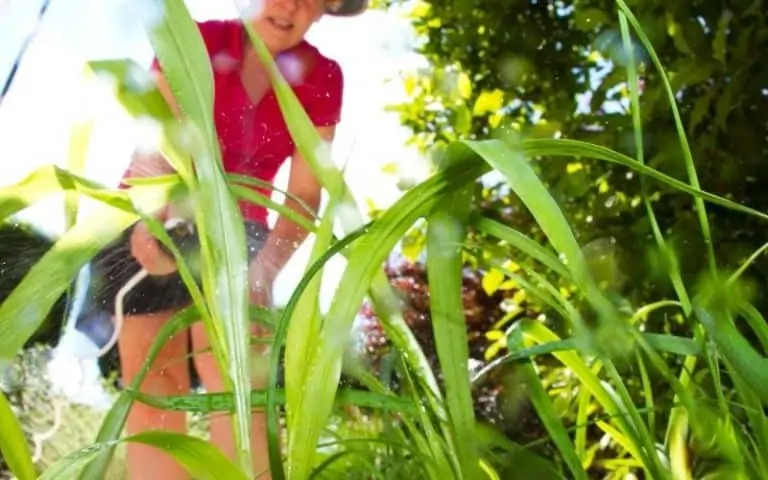
How to make homemade weed killer for a flower garden?
There are many different methods for controlling bothersome weeds growing in your flower bed. When you’re growing flowers, you might be tempted to use a weed killer to make your life easier. However, many commercial weed killers can be harmful to your flowers and grass.
Instead of using a commercial weed killer, you can make your own using common household ingredients to get rid of unwanted weeds.
Corn gluten made natural weed killer
Corn gluten is an effective weed control that prevents weeds from sprouting in areas where ground covers and flowering plants have been planted. As a result, it’s gaining popularity in controlling crabgrass and other weeds from the beds.
Vinegar based homemade weed killer
Vinegar is a good, all-natural way to kill weeds and grass, especially when the weeds are in a flower bed and you don’t want to kill the flowers.
Sometimes people use consumption-grade vinegar to kill weeds, but it’s not very effective. This is because the vinegar used for consumption is a weak acid, less than 5% of the solution. In comparison, commercial vinegar for weed removal uses up to 20% acetic acid solution.
The higher acid concentration commercial grade vinegar is more effective in controlling weeds. To prepare it, take 1-gallon white vinegar, a small cup of salt, and one tablespoon of liquid dish soap.
Mix it all in a gallon of water and fill it in a spray bottle. The acetic acid and salt kill the pesky weed, while soap helps speed up its absorption into the plant.
You can spray the solution onto the targeted weeds that you want to get rid of in your flower bed. However, you should be cautious when using vinegar and don’t spread it on plants you want to keep.
The solution won’t make any difference between the weed and the flowering plant you want to keep, as it will equally destroy both.
How to choose the best weed killer for flower beds?
Before you decide which weed killer is suitable for your garden, you’ll need to do some research on your flower bed type and weeds growing in it. There are many different types of weed killers to choose from, and you must select the right kind.
The first thing to consider is the area you want to treat. For example, do you need something that you can use safely in an ornamental garden? Or, are you looking for something for larger areas like a lawn or flower bed?
Some garden weed preventers are only safe for use on specific types of plants, so it’s essential to know which kind you want to remove and which plants you want to keep. There are more than 200 different weed killers on the market today, and it’s not always easy to decide which one is the best for you.
Is weed killer safe to use when you have pets?
When you buy a chemical weed killer, it contains many different harmful chemicals, and some are toxic. Glyphosate is the most common ingredient, and although it’s effective in controlling tough weeds, it can cause serious health effects.
If you’re going to use weed killer around your flower bed, make sure to keep your pets away for at least 24 hours. If your weed infestation isn’t severe, consider using natural organic herbicides or pull it out from your yard in an old-fashioned way using a weed puller or shovel.
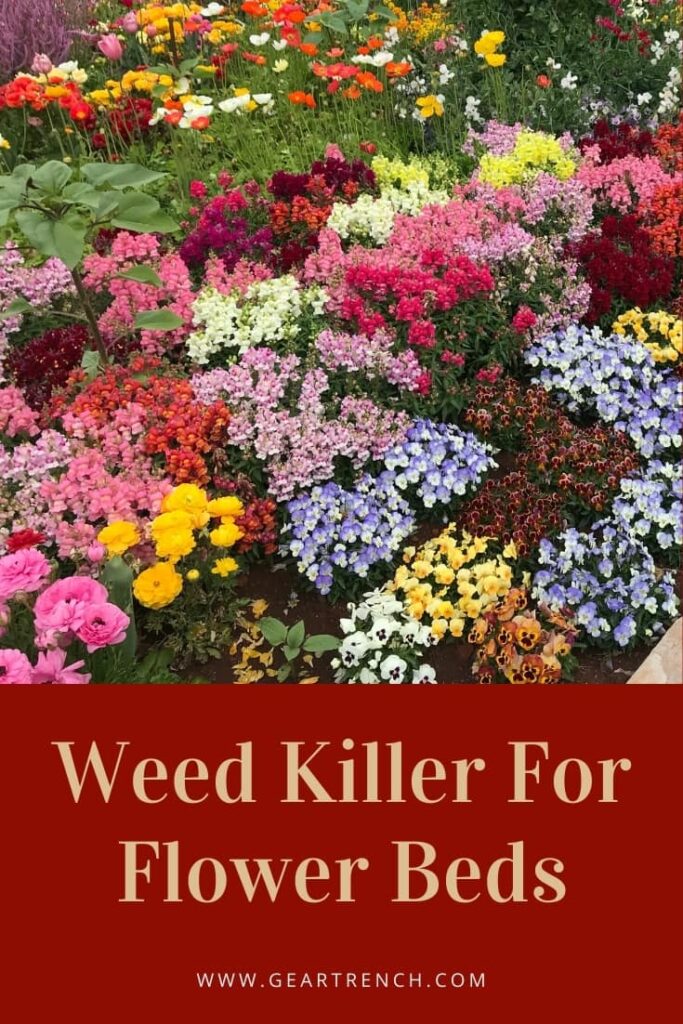
Don’t forget to share this post






